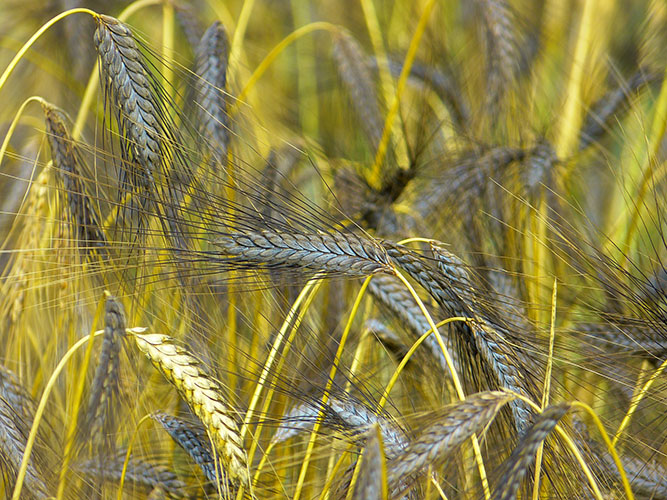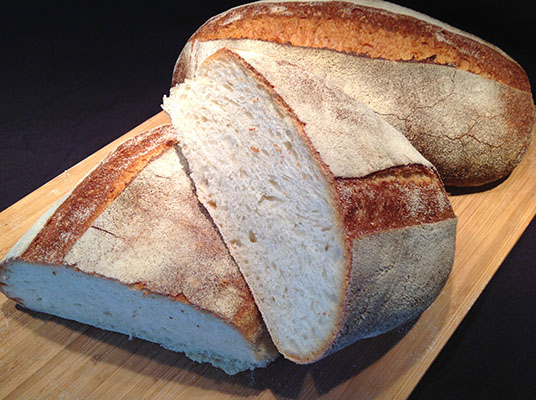Culinary Stories: Spelt bread

Welcome to our usual appointment with our culinary stories Spelt bread
Today we want to begin with the story of a food that is well known, in one form or another, all over the world. We don’t think that there is a country where bread is not eaten, or at least known in some form, made with wheat or other cereals, risen or not.
It is an ancient and very simple food which for many years was extremely important to feed entire populations. We can learn from history books that it existed in the Neolithic, with the creation of the first settlements and with farming, that then led to the creation of tools, utensils and farming techniques.
Grains became a basic food in man’s daily diet and with time the farming and grinding techniques improved. Archaeological evidence shows the existence of seed and utensil fossils in the areas of ancient civilizations in Mesopotamia, Egypt, Central Europe, Northern Europe, and also in Greece and Italy.
Incisions, bas-relief and engravings that tell the story of the existence of wheat have also been found. We can assume that the first type of bread ever made was a sort of unleavened flat bread created by mixing flour with water and cooked on red-hot stones.
 History books tell us that the Egyptians were great farmers, they were practically the first bread makers and used a technique that today we call natural leavening process. They made fluffy and fragrant breads adding a bit of left-over dough to the flour and water. This little bit of bitter-flavoured dough was saved carefully and today we call it natural yeast
History books tell us that the Egyptians were great farmers, they were practically the first bread makers and used a technique that today we call natural leavening process. They made fluffy and fragrant breads adding a bit of left-over dough to the flour and water. This little bit of bitter-flavoured dough was saved carefully and today we call it natural yeast
The Egyptians then passed their bread-making secrets on to the Jews who attributed a great religious importance to bread, therefore, Jewish bakers were considered people of great prestige. We read about bread in the Bible and its sacredness is well known in religious rituals.
The ancient Greeks, for whom bread was associated with land’s fertility, perfected the art of bread making. They used their great creativity and added various spices and herbs to their bread, thus creating a remarkable variety.
The ancient Romans considered grains, and particularly spelt, a very important part of their diet. The flour they obtained after grinding the wheat was very good for making bread.
Spelt was used in the form of polenta, soup and unleavened flat bread, but they also made a white flour.
They built public ovens where bread was baked and sold to the citizens of the city, in fact, around the third century after Christ milling and baking became professions and bread shops were created.
A law was in force at that time which stated that bread made from wheat was healthier and to be preferred to “puls”, which, based on information available, was a type of mush similar to polenta that was made by mixing the flour of some grains such as barley, millet or spelt, with warm water. The law authorized the purchase of wheat from public granaries at a lower price than the market price in effect at the time.
Pliny, the Roman author and philosopher, wrote that many different types of bread existed in ancient Rome:
 Panis streptipcius made from a mixture of flour, water, milk, oil, lard and pepper that was cooked in thin pieces; the artologalum that was made really thin; the panis adipatus which was a rich bread made with lard and bacon; the panis testicius a flat unleavened bread prepared and eaten by soldiers in their camps.
Panis streptipcius made from a mixture of flour, water, milk, oil, lard and pepper that was cooked in thin pieces; the artologalum that was made really thin; the panis adipatus which was a rich bread made with lard and bacon; the panis testicius a flat unleavened bread prepared and eaten by soldiers in their camps.
There was the ador bread used during religious rites, the palatius that was found on the imperial tables, the panis secondarius, panis candidus or panis siligineus consumed during wealthy people’s meals, while on the table of the poor there was a black bread made from flour ground thin and was called panis plebeius.
Lastly, there was the panis canfusaneus, that was very nutritious and was given to gladiators and athletes, the panis nauticus that was used for the sailors, since it kept for a long time so it was suitable for long trips at sea, and the panis gradilis which was given free to the public on the steps of the amphitheatres during public shows.
Bread was a commodity that was very important for emperors too, who used it to obtain or keep the favour of the people.
In fact, a famous phrase by the great Roman poet and satirical writer Juvenal, says “Panem et circenses” which basically means that in order to gain and hold the power over the people, one must give them affordable food and entertainment. He used this metaphor to describe the era in which he lived and the way politicians remained in power, that is by taking the people’s attention away from those who governed them, regulating the distribution of grain (panem) and organizing spectacular public shows (circenses), such as gladiator fights, chariot races and fights with animals.
Large amounts of wheat arrived in ancient Rome from the islands of Sicily and Sardinia, and also from the Asian and African Roman provinces, but more than half of it came from Egypt.
Vitruvius, Roman author, architect, civil and military engineer, wrote in his De Architectura that the ancient Romans made a great use of the aqueducts and, therefore, used water power to operate the water mills which previously had been handled by slaves or pulled by animals.
Today, in Rome, we can still see a monument dedicated to the bread makers of ancient Rome near Porta Maggiore, one of the entrance ways in the Aurelian Walls that can be seen at the point where eight of the eleven aqueducts, that brought water to the city, converged.
It is shaped like a tower of large vases piled on top of each other, vertically and horizontally. It is there that the bread that fed the Romans of ancient times, so many centuries ago, was left to rise.
Private bread production started in the dark Ages, when the lords owned their own mills and ovens and were able to make their own flour.
Bread was made by hand up to the second half of the 18th century, when the first machines to mix, shape and bake were produced.
In Italy today we can count about 250, more or less popular, different types of bread, according to their region of origin, the climate in which they are cultivated and the type of farming.
In the warm southern regions of Italy, we can enjoy very soft bread made from wheat flour, which is also used to make pasta.
In Sicily there is a delicious bran bread which is often flavoured with cumin, sesame or anise seeds. The latter is also used by bakers in the Puglia region when they make their famous taralli.
In the northern regions of Italy, where rice is abundantly produced, we can taste a wonderfully soft and light rice bread that is made by mixing soft wheat flour with rice flour.
In other regions, such as Emilia Romagna, there is a yellow bread made by mixing corn flour with wheat flour.
In the mountain regions, where the climate is cold, such as Valle d’Aosta, Piemonte, Trentino Alto Adige and Valtellina, instead, we can eat a fantastic rye bread.
We were inspired by the ancient Roman bread and want to share with you our recipe for spelt bread.
 For those of you who aren’t familiar with this grain, it is considered the oldest among the cultivated types of wheat. Most of the spelt cultivated in Italy is medium size, while the large size is imported from other European countries, mainly France.
For those of you who aren’t familiar with this grain, it is considered the oldest among the cultivated types of wheat. Most of the spelt cultivated in Italy is medium size, while the large size is imported from other European countries, mainly France.
Over the centuries the cultivation of this grain has slowly decreased and has been replaced by the soft wheat and the durum wheat. Today, it can be found mainly in the organic farming areas and it represents an interesting alternative for our nutrition.
It contains more protein compared to other wheat and is rich in vitamins and minerals but low in fat.
The whole wheat spelt contains even more fiber than processed spelt.
It is known that it is more filling, it is good for the proper functioning of our intestine, it is lower in calories, and it is more digestable than soft wheat and durum wheat. We use it a lot, not only in our breads but also in cakes.
Ingredients Spelt bread:
800 gr of spelt flour
500 ml of water kept at room temperature
200 gr of refreshed starter or 5 gr of regular bread yeast
1 tbsp of brown sugar
1 tbsp of salt
Preparation for Spelt bread
We begin by diluting the yeast in the water then adding some of the flour. When the mix is quite thick we add the sugar, the rest of the flour and finally the salt.
We mix it well and knead the dough until it is nice and smooth, not sticky. We let it sit to rise for about 15 minutes then we fold it three times and repeat this at 30 minute intervals. We place our dough in a bowl and seal it with plastic wrap, and put it in the fridge overnight.
The next day we take it out of the fridge and let it sit at room temperature for a while. After about an hour, we shape our dough into a loaf and wrap it in a clean cotton cloth after having sprinkled both the bread and the cloth with durum wheat flour.
When the loaf has risen, we take it out of the cloth, place it on a baking pan, make some long cuts on it with a sharp knife and place it in the hot oven at the maximum temperature for 15 minutes.
We then put our oven at 200° and let it bake for another 15 minutes, then down to 180° for about another half hour until golden brown (everyone can decide the time according to their own oven). The process of creating such a precious food is extremely satisfying and we all know how inebriating and irresistible the smell of freshly-baked bread can be!
(foto da pixabay, wikipedia.org, foto del pane e English translation di Tina Ferraiuolo & Cristiana Ordioni) Culinary Stories: Spelt bread
Articolo in italiano Storie Culinarie il pane al farro